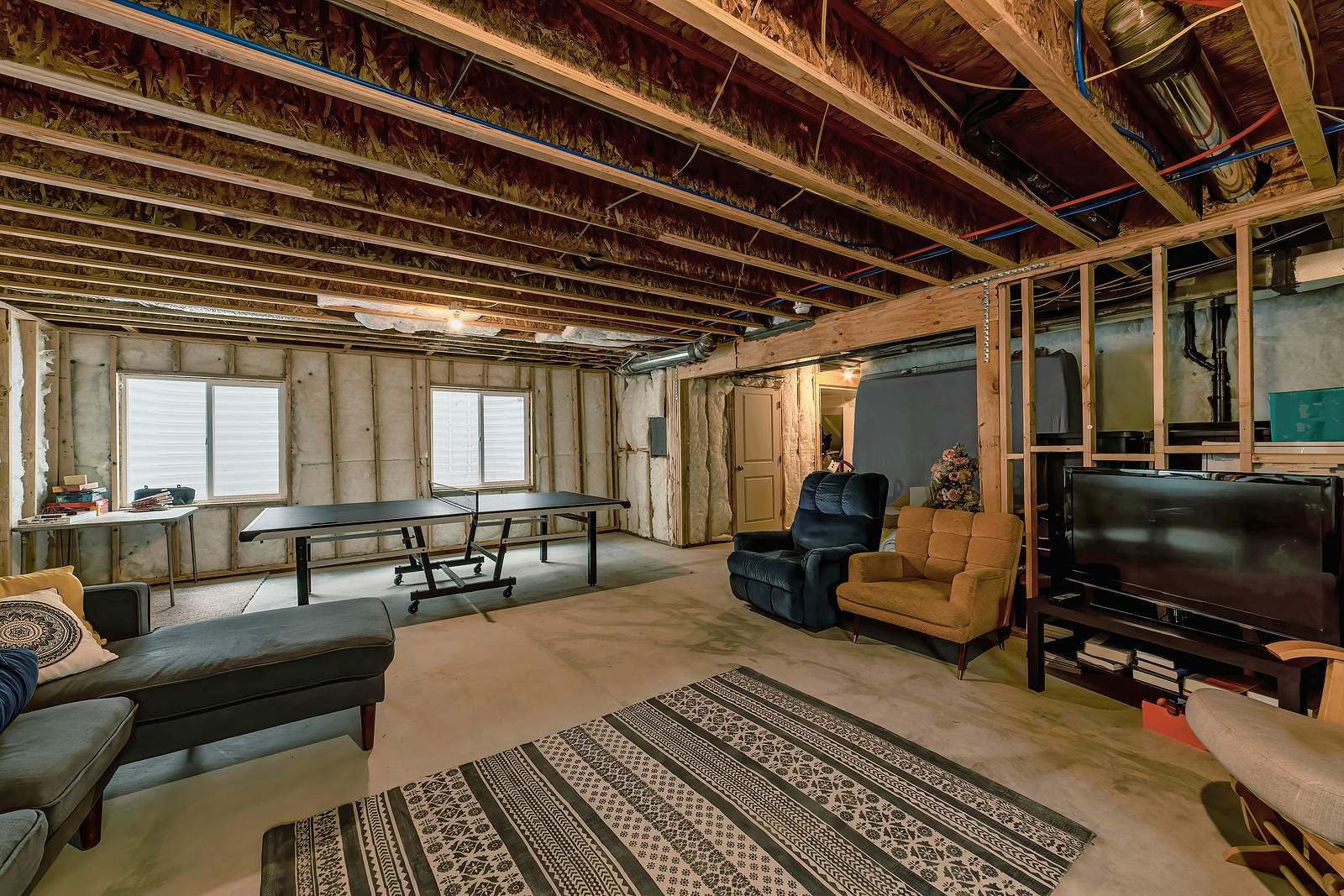
Is Your Basement Freezing? How To Keep Your Basement Warm This Winter
Basements are notoriously chilly, especially in our cold northern climate.
If you only use your basement for storage, you may not need it to be warm and cozy. But if you have a basement family room, bedroom, or bathroom, you need it to be comfortable enough that you actually want to spend time down there.
If your basement is freezing, there are a variety of tactics you can use to turn up the heat and improve energy efficiency. Here are a few ways to keep your basement warm this winter.
Seal Leaks
Cracks or gaps in your basement walls or floors allow cold air to seep into your home and heated air to escape.
Check for cracks in the foundation, flooring, and walls, as well as gaps around windows and doors. Seal up small cracks with the appropriate caulk, foam insulation, or weather stripping. If you notice a significant crack in your home’s foundation, have a professional take a look at it to make sure you don’t have bigger issues on your hands.
Update Older Windows
Replace old drafty windows and doors with new, energy-efficient options. If your windows are warped, broken, or have damaged seals or single-pane glass, it may be time to swap them out. When replacing windows, choose energy-efficient varieties, such as double- or triple-paned glass windows.
Add More Insulation
Insulation reduces the rate of heat transfer in a space — in other words, it keeps warm air in and cold air out. If your basement isn’t insulated sufficiently, it won’t retain heat as well as it should, and your other efforts to keep your basement warm won’t be as effective as they would be otherwise.
If your basement already has interior walls covering the foundation, you may be able to add additional spray foam insulation. If your basement foundation is visible, you might want to consider framing in your basement walls so you can add insulation.
In addition, check to be sure you have enough insulation around windows and doors, and add more as necessary.
Install Carpet or Add Area Rugs
Your walls aren’t the only factor in keeping your basement warm: the type of flooring you have plays a role as well.
If you have bare concrete floors, consider covering them up with wall-to-wall carpet or area rugs. Not only is carpet nicer to walk on, it can also help insulate your floor and keep your basement warmer. Even placing throw rugs over the more highly-trafficked areas of your basement can help keep your feet warm and insulate the floor a bit.
Note that if your basement tends to leak or flood regularly, you’ll want to take care of that first before installing carpet or rugs.
Install In-Floor Heating
An in-floor radiant heat system is another way to warm up your basement. These systems circulate hot water beneath your floor, warming the cement. That heat rises throughout the room and keeps your basement warm.
Keep in mind that in-floor heat is easier to install in a new construction home. It is still possible to install in existing basement flooring, but the process is more involved.
Add an Electric Baseboard Heater or Wood Stove
You could also consider installing an individual heating unit in your basement, such as an electric baseboard heater or a wood or pellet stove. If you’re up for hauling firewood or bags of wood pellets into your basement, a stove can add cozy ambience in addition to heat.
Electric baseboard heaters aren’t as attractive as a wood stove, but if that’s not a concern for your space, they’ll do the job well. You’ll need one for each room, as the heat from baseboard heaters doesn’t easily travel from room to room. You can either have a baseboard heater hard-wired into your electrical system or opt for a portable plug-in version.
Use a Space Heater
Space heaters are a good choice for when you want to heat a smaller area of the basement while you’re spending time down there. Space heaters can be hard on your electric bill, however: if you use yours a lot, you’ll definitely notice your electricity costs creeping up.
If you do choose to use a space heater, practice good fire safety to avoid creating a fire hazard:
- Always follow manufacturer’s instructions
- Never leave space heaters unattended
- Always turn heaters off and unplug them when you leave the room
- Never leave them on overnight
- Leave a 3-foot radius (at minimum) around space heaters, keeping them away from anything flammable
Install Basement Vents
Depending on the design of your home and heating system, you may also be able to add a heating vent to your existing HVAC system.
Extending ductwork like this is a job for the pros, so call in an HVAC professional to determine if this is possible in your space and to complete the work for you if it is. Even if it seems easy to do, there are some important details that only a professional will be able to help with, such as calculating the heat load of your system and the size and configuration of the ductwork.
Trust Titan Heating and Cooling for Your Basement HVAC Needs
If you’d like to explore the option of extending the ductwork of your existing HVAC system, the pros at Titan can help. Or if HVAC maintenance or installing more efficient heating and cooling equipment is on your to-do list, we can handle that as well. Contact us here to get on our schedule.


